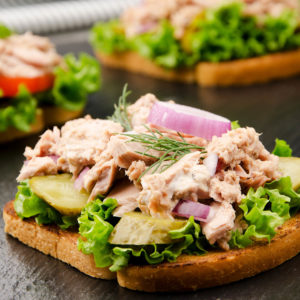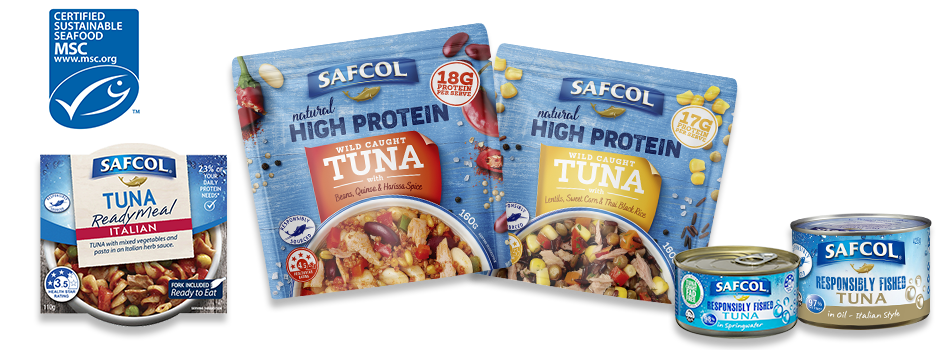by Ashleigh Feltham Accredited Practising Dietitian and Accredited Nutritionist

How to Lower Bad Cholesterol with Vitamin D
Vitamin D is a fat-soluble vitamin with many health benefits. This includes allowing the proper absorption of calcium in your body to promote optimal immune system function. But vitamin D may also play a role in promoting optimal cholesterol levels.
Observational research showed that being deficient in vitamin D is associated with lower ‘good’ HDL cholesterol. HDL cholesterol moves ‘bad’ LDL cholesterol to the liver for excretion. Additional studies report that when levels of vitamin D become sufficient, it reduces total cholesterol, triglyceride and LDL- cholesterol. LDL-cholesterol build up can cause plaque in arteries leading to heart disease and stroke. High levels of both triglycerides and total cholesterol increases heart disease risk.
The role of vitamin D in reducing cholesterol is proposed to be at the cellular level. Vitamin D blocks the uptake of cholesterol into the endothelium, which is a thin membrane that lines the cells of the heart and blood vessels. Vitamin D also decreases specific receptors to reverse the laying down of cholesterol in blood vessels.
A third function of vitamin D is that it switches the macrophage (a type of immune cell) from M2 to M1. This is essentially an additional way that vitamin D reduces cholesterol build-up in blood vessels and arteries.
This research provides insight into the link that vitamin D has to reduce cholesterol. The use of supplementation is not supported in all studies and more research is still needed in that area. The take-home message is to opt for a whole-food approach.
The main source of vitamin D is sun exposure, but there are food sources that provide this fat-soluble vitamin. This includes seafood, eggs including the yolk, dairy, and fortified products like cereals, orange juice, and margarine.
The National Health and Medical Research Council recommends the vitamin D intake for men and women aged 19-50 years is 5µg per day. Between the 51 and 70 years, adequate intake increases to 10µg per day. From 71 years on, the adequate intake further increases to 15µg per day. Note that 1 microgram (µg) is equal to 1 international unit (IU).
Food sources of vitamin D include:
- Seafood: There are two types of vitamin D; D2 and D3. Vitamin D3 is the more bioavailable form, meaning it is more easily absorbed into the body.
- Canned sardines (2), 1.2 µg
- Canned tuna (85g), 1.0 µg
- Farmed rainbow trout (cooked, 85g), 16.2 µg
- Sockeye salmon (cooked, 85g), 14.2 µg
- Fortified food products from cereal, breads, spreads like margarines and butter, and plant-based drinks like soy.
- Cod liver oil (1 teaspoon), 34 µg
- Dairy
- Milk, 2% fat, Vit D fortified (1 cup), 2.9 µg
- Cheddar cheese (28g), 0.3 µg
- Liver, beef (85g), 1.0 µg
- Egg yolk (large), 3.8 μg
- Mushrooms exposed to UV light provide vitamin D2.
- Mushrooms, exposed to UV light (½ cup), 9.2 µg

Take home message
To achieve healthy cholesterol levels, a whole lifestyle approach is best. While no single nutrient can create optimal cholesterol levels, ensuring you are getting enough vitamin D is an important component of attaining healthy cholesterol levels. A food and lifestyle first approach is best, including careful exposure to sunlight. Seafood gives you a matrix of nutritional components, including an abundance of vitamin D3 to support ideal cholesterol levels and a healthy heart.

References:
- Renke G, Starling-Soares B, Baesso T, Petronio R, Aguiar D, Paes R. Effects of Vitamin D on Cardiovascular Risk and Oxidative Stress. Nutrients. 2023; 15(3):769.
- Oh, J.; Weng, S.; Felton, S.K.; Bhandare, S.; Riek, A.; Butler, B.; Proctor, B.M.; Petty, M.; Chen, Z.; Schechtman, K.B.; et al. 1,25(OH)2 vitamin d inhibits foam cell formation and suppresses macrophage cholesterol uptake in patients with type 2 diabetes mellitus. Circulation 2009, 120, 687–698
- Szeto, F.L.; Reardon, C.A.; Yoon, D.; Wang, Y.; Wong, K.E.; Chen, Y.; Kong, J.; Liu, S.Q.; Thadhani, R.; Getz, G.S. Vitamin d receptor signaling inhibits atherosclerosis in mice. Mol. Endocrinol. 2012, 26, 1091–1101.
- Skaaby, T.; Husemoen, L.L.N.; Pisinger, C.; Jorgensen, T.; Thuesen, B.H.; Fenger, M.; Linneberg, A. Vitamin D status and changes in cardiovascular risk factors: A prospective study of a general population. Cardiology 2012, 123, 62–70.
- Jaimungal, S.; Wehmeier, K.; Mooradian, A.D.; Haas, M.J. The emerging evidence for vitamin D-mediated regulation of apolipoprotein A-1 synthesis. Nutr. Res. 2011, 31, 805–812.
- Schmitt, E.B.; Nahas-Neto, J.; Bueloni-Dias, F.; Poloni, P.; Orsatti, C.L.; Nahas, E.A.P. Vitamin D deficiency is associated with metabolic syndrome in postmenopausal women. Maturitas 2018, 107, 97–102.
- Lupton, J.R.; Faridi, K.F.; Martin, S.S.; Sharma, S.; Kulkarni, K.; Jones, S.R.; Michos, E.D. Deficient serum 25-hydroxyvitamin D is associated with an atherogenic lipid profile: The very large database of lipids (VLDL-3) study. J. Clin. Lipidol. 2016, 10, 72–81.
- Warren, T.; Mcallister, R.; Morgan, A.; Rai, T.; Mcgilligan, V.; Ennis, M.; Page, C.; Kelly, C.; Peace, A.; Corfe, B.; et al. The Interdependency and Co-Regulation of the Vitamin D and Cholesterol Metabolism. Cells 2021, 6, 2007.
- Ponda, M.P.; Huang, X.; Odeh, M.A.; Breslow, J.L.; Kaufman, H.W. Vitamin D may not improve lipid levels: A serial clinical laboratory data study. Circulation 2012, 126, 270–277
- Endothelial Function Testing. Cedars-Sinai.














Comments are closed.